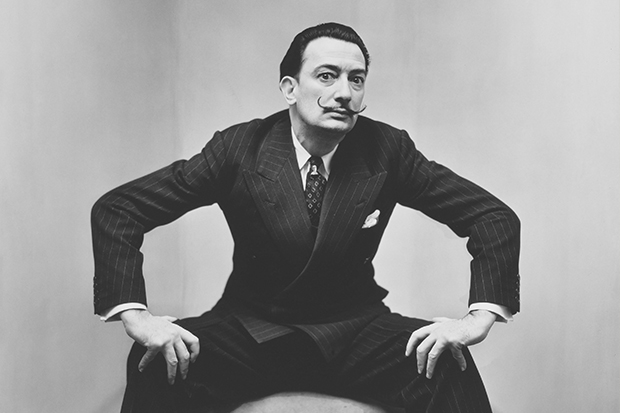‘Radical’ is like ‘creative’, a word that has been enfeebled to the point of meaninglessness. Everybody seems to want to be both, but nobody has any clear idea of what might be involved. In the case of this exhibition, radical could refer either to aesthetic or political themes; neither seems quite right.
Never mind, ’modernist’ has, with the passage of time, become more firmly anchored. We now know it was a movement in the arts that began in about the 1880s and ended in, very roughly, the 1950s or ’60s. It was a period in which art became preoccupied with form as a determinant — rather than the servant — of content.
In the context of photography, the modernist impulse was best summed up by the New York street snapper Garry Winogrand: ‘Photography,’ he said, ‘is not about the thing photographed. It is about how that thing looks photographed.’ The form — lens, film, post-processing — produced not a simulacrum of reality, but, rather, an entirely new version.
To talk of modernist photography, therefore, makes sense. When the technology was first created in the 1830s it was immediately identified as a way of faithfully reproducing reality. As this seemed to usurp the art of painting, it tended to drive painters towards less literal methods — hence impressionism, expressionism, surrealism, modernism etc. Even today, David Hockney wages a painted war on the camera’s one-eyed perspective.
So when photography embraced modernism in what the curators of this show call ‘the classic modernist period of the 1920–50s’, it did so with a form of painting envy. Artists with brushes were proving themselves closer to the cutting edge of the contemporary and what had been a new technology was in danger of being outdated.
The most obviously modernist works in this show, notably by Man Ray, do, indeed, go far beyond mere representation. Ray regularly used a processing method known as solarisation. This involved reversals of tone — black to white, white to black. The effect, in Ray’s hands at least, dramatically removes the image to another realm, dreamed or hallucinated. His 1936 portrait of Dora Maar makes her face look almost surgically removed and being caressed by a ghostly version of her own hand.
This was surrealism, the modernist form that came most naturally to many of these photographers. Aesthetically, its effects could be catastrophic. Herbert Bayer’s ‘Self-Portrait’ (1932) is student stuff. He pictures himself in a mirror looking startled at having removed a chunk of his upper arm.
Such self-consciousness is a problem for photographers as it tends to neutralise their ability to see for themselves. Salvador Dalí, typically, was on top of this so that pictures of him tend to look like pictures by him. Irving Penn just about survives the encounter. His 1947 portrait certainly shows Dalí in control of his pose, but something about the framing and the two angled walls in which he appears to be trapped suggest something more — perhaps that Dalí is a bit of a prat.
Not all poses are bad, of course. Igor Stravinsky laid it on pretty thick for Edward Weston — the left hand with a heavy ring on the third finger caressing the stern face, the glasses raised on the forehead, the cold stare, the tie, the shirt. But the rigour of Weston’s method adds depth to the mask, the eyes become troubled, perhaps irritated, and the fingers touching the cheek nervous. This is a tremendous picture, a portrait of art as much as of the artist.
In spite of the show’s title, modernism does not dominate. Probably more important in the context of later developments in photography is the realism — and journalism — of the period. Here we have Dorothea Lange’s ‘Migrant Mother’ (1936), a picture of hardship so immediately arresting that, in 1998, it was used on a postage stamp. But familiarity should not conceal the exquisite sculptural quality of the lighting — the woman appears hewn from stone — and the brilliant entanglement of the limbs and heads of the mother and the two children.
Two of the greatest talents of photographic realism — Walker Evans and Robert Frank — are also here and there’s a curiously thrilling picture of that great dandy realist Henri Cartier-Bresson with his wife Ratna Mohini in 1936. The show is actually about modernism versus realism and this picture seems to hint that, in photography at least, realism will win.
Sir Elton John started this collection in 1991 when he had ‘just gotten sober’, freeing himself of drugs and alcohol — ‘it was like I was seeing with clear eyes’. The one obvious omission is Ansel Adams, the great landscape artist of the era. John finds him ‘a bit too postcardy’. But, otherwise, this show is, indeed, a great ad for the optical benefits of rehab.






Comments